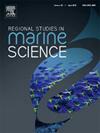Comparative analysis of top-down and bottom-up approaches in maritime spatial planning
IF 2.4
4区 环境科学与生态学
Q3 ECOLOGY
引用次数: 0
Abstract
This paper presents a comparative analysis of top-down and bottom-up approaches in Maritime Spatial Planning (MSP), with a focus on Estonia (EE) and New Zealand (NZ). Estonia's MSP, mandated by the European Union’s MSP Directive, is characterised by a top-down approach, with government policies dominating the planning process. Conversely, the Hauraki Gulf Marine Spatial Plan (HGMSP) in NZ exemplifies a bottom-up approach, characterised by a collaborative, stakeholder-led process integrating Indigenous knowledge and scientific data. Our analysis identified key strengths and limitations of both approaches. EE’s legally binding plan offers strong legal authority, clear responsibilities, and enforceable conditions but is less flexible in addressing new knowledge and faces challenges in fully engaging diverse stakeholder groups. In contrast, NZ’s non-statutory plan enables strong stakeholder leadership and broad participation, including Indigenous communities, but lacks formal enforcement mechanisms and sufficient resourcing to support long-term implementation. The analysis emphasises the significance of flexible and inclusive MSP strategies for achieving a balance between socio-economic development and marine ecosystem conservation. By comparing these two real-world examples, this study highlights how both systems provide valuable lessons and complementary insights for improving future MSP practices.
海洋空间规划中自上而下与自下而上方法的比较分析
本文对海洋空间规划(MSP)中自上而下和自下而上的方法进行了比较分析,重点是爱沙尼亚(EE)和新西兰(NZ)。爱沙尼亚的MSP由欧盟MSP指令授权,其特点是自上而下的方法,政府政策主导规划过程。相反,新西兰的Hauraki海湾海洋空间规划(HGMSP)则是自下而上方法的范例,其特点是协作、利益相关者主导的过程,整合了土著知识和科学数据。我们的分析确定了这两种方法的主要优势和局限性。EE的具有法律约束力的计划提供了强有力的法律权威、明确的责任和可执行的条件,但在处理新知识方面缺乏灵活性,并且在充分吸引不同利益相关者群体方面面临挑战。相比之下,新西兰的非法定计划支持强有力的利益相关者领导和广泛参与,包括土著社区,但缺乏正式的执行机制和足够的资源来支持长期实施。分析强调了灵活和包容的MSP战略对于实现社会经济发展和海洋生态系统保护之间的平衡的重要性。通过比较这两个现实世界的例子,本研究强调了这两个系统如何为改进未来的MSP实践提供有价值的经验和互补的见解。
本文章由计算机程序翻译,如有差异,请以英文原文为准。
求助全文
约1分钟内获得全文
求助全文
来源期刊

Regional Studies in Marine Science
Agricultural and Biological Sciences-Ecology, Evolution, Behavior and Systematics
CiteScore
3.90
自引率
4.80%
发文量
336
审稿时长
69 days
期刊介绍:
REGIONAL STUDIES IN MARINE SCIENCE will publish scientifically sound papers on regional aspects of maritime and marine resources in estuaries, coastal zones, continental shelf, the seas and oceans.
 求助内容:
求助内容: 应助结果提醒方式:
应助结果提醒方式:


